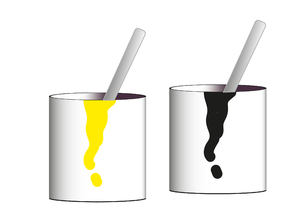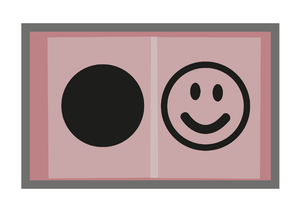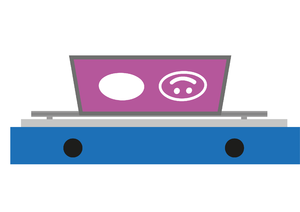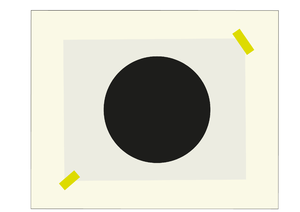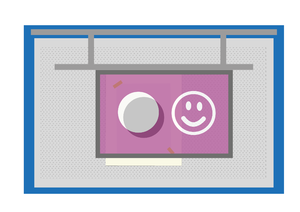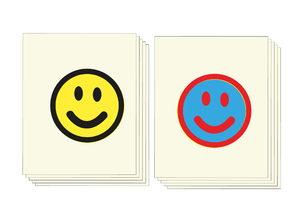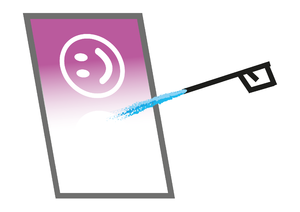Difference between revisions of "Quickstartguide:Screenprint"
From Publication Station
| Line 13: | Line 13: | ||
[https://www.youtube.com/watch?v=h-Jw05OhDG8 Video about preparing photo for screenprint] | [https://www.youtube.com/watch?v=h-Jw05OhDG8 Video about preparing photo for screenprint] | ||
== Screen making == | == Screen making == | ||
=== Coat a screen with light-sensitive emulsion === | === Coat a screen with light-sensitive emulsion === | ||
Revision as of 12:39, 23 March 2023
Steps to take for screen printing a two colour design on paper.
Preparation
Make a design
Use a digital design tool or design by hand on paper.
We use a smiley face as an example of a two-colour design.

Make colour separations
- Print both layers with black on a transparent sheet.
- Hand draw with a paint marker (Posca, Monotov ect.) or drawing ink on transparent or semitransparent.
Video about preparing photo for screenprint
Screen making
Coat a screen with light-sensitive emulsion
- Choice a screen:
- red for paper, blue for textile
- check if there's no emulsion on the screen
- check if the screen is big enough
- use the scoop coater to fill the screen with the light-sensitive emulsion
- let it dry in de drawer in the exposure unit where it is protected from the light.
Video about Preparing A Screen
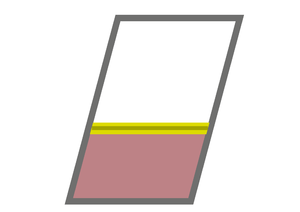
Expose screen to UV light
- Place your transparent face up on the glass plate at the exposure unit.
- Place the screen over the transparent on the glass plate.
- Close the cover of the exposure unit and close the locks.
- Start the exposure.
Wash out the non-exposed parts
Make both sites of the screen wet with the hose, wash the non-exposed parts.
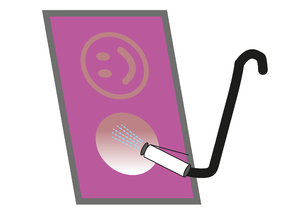
Let the screen dry
In the drying drawers, don't place it in a drawer above a non exposed screen to avoid dripping water on a non exposed screen.

Prepare for printing
Get paper.
Paper sheets thickness and weight doesn’t mater
Use paper sheets of the same size
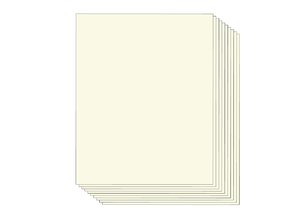
Mix inks
one part acrylic paint
one part screen print medium
